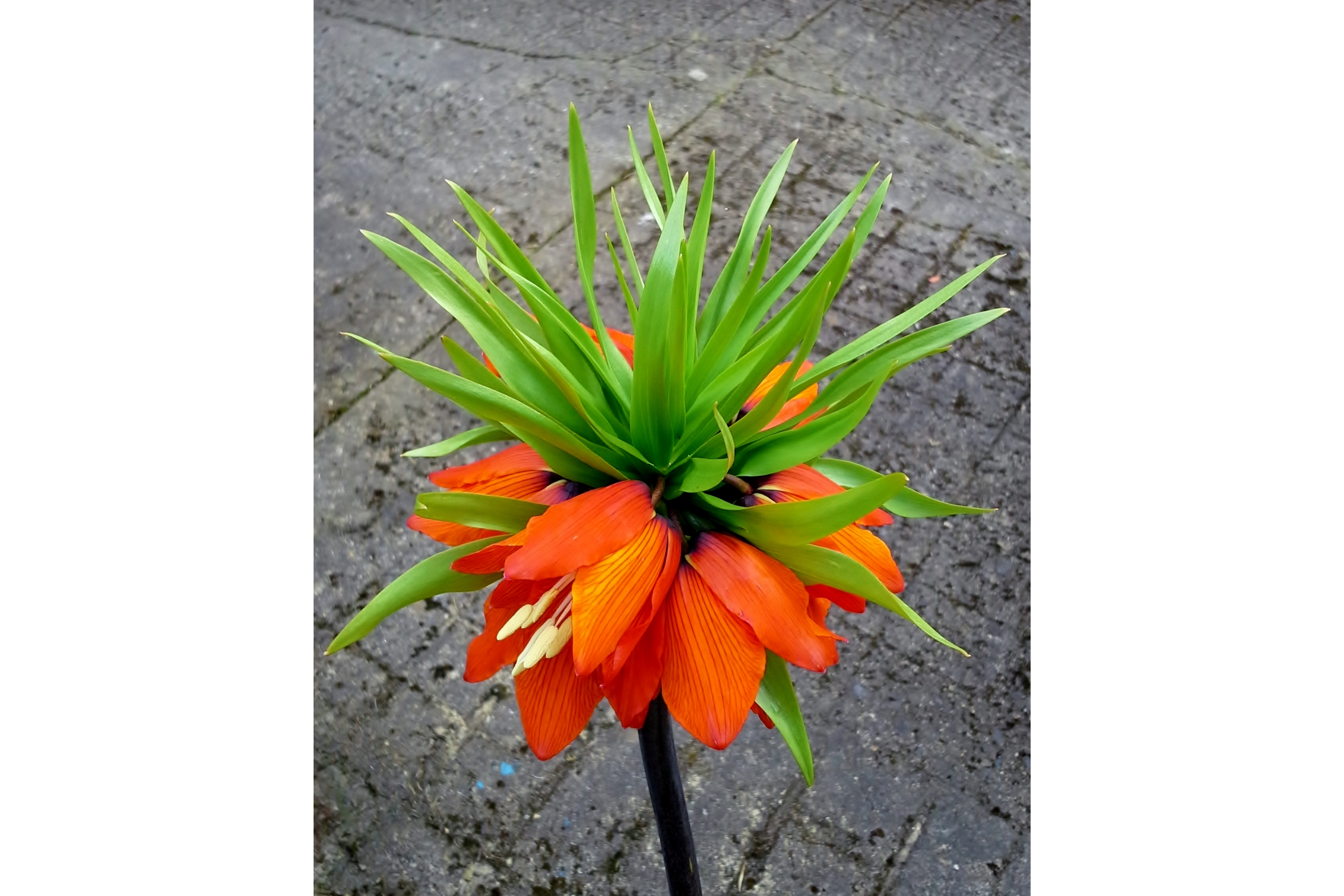Crown imperial
(Fritillaria imperialis)

Description
Fritillaria imperialis, the crown imperial, imperial fritillary or Kaiser's crown, is a species of flowering plant in the lily family Liliaceae, native to a wide stretch from the Anatolian plateau of Turkey, Iraq and Iran (i.e. Kurdistan) to Afghanistan, Pakistan, Northern India and the Himalayan foothills. It is also widely cultivated as an ornamental and reportedly naturalized in Austria, Sicily, and Washington State, USA. The common names and also the epithet "imperialis", literally "of the emperor", refer to the large circle of golden flowers, reminiscent of an emperor's crown. Fritillaria imperialis grows to about 1 m (3 ft) in height, and bears lance-shaped, glossy leaves at intervals along the stem. It bears a prominent whorl of downward facing flowers at the top of the stem, topped by a 'crown' of small leaves, hence the name. While the wild form is usually orange-red, various colours are found in cultivation, ranging from nearly a true scarlet through oranges to yellow. The pendulous flowers make a bold statement in the late spring garden; in the northern hemisphere, flowering takes place in late spring, accompanied by a distinctly foxy odour that repels mice, moles and other small animals. The flower has a long and deep connection with the history, religion, mythology and folklore of its native Iran and, as a result, has acquired a wealth of evocative vernacular names, often referencing the pendent form of the blossoms and the tear-like nectar drops borne by the six nectaries. In Iranian folklore the nodding flowers are described (in comparison with the upright flowers of tulips) as being 'upside-down', this curious posture being attributed to the plant's bowing its (originally upright) 'head' in sorrow upon the death of a mythological or religious personage. Likewise, the glistening drops of nectar at the base of each flower are described as the tears which the plant weeps in mourning the departed. Depictions of the distinctive inflorescences may be seen on the sculpted capitals of Sassanid columns, as at Taq-e Bostan. F. imperialis is linked to the legend of the tragic death of Siyâvash, (a semi-divine hero in Ferdowsi's prodigious national epic Shahnameh) - whence the common name Ashk-e Sivash ('Tear of Siyâvash')
Taxonomic tree:







